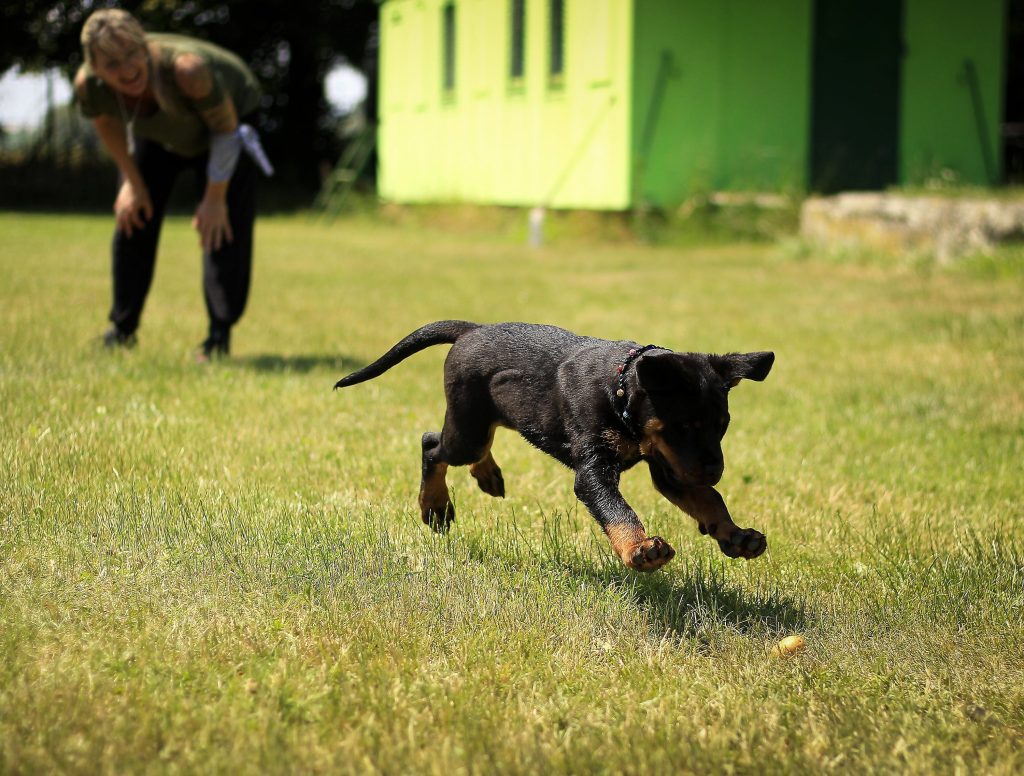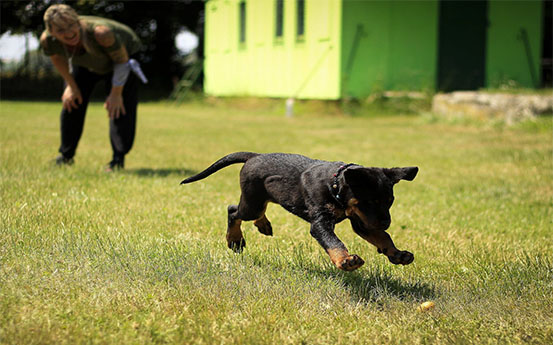
Introduction
Dog ownership can be incredibly rewarding, but it comes with its set of challenges, particularly when it comes to training. Whether you’ve just welcomed a new puppy into your home or you’re dealing with a more seasoned canine companion, effective dog training is essential for a harmonious and well-behaved pet.
In this article, we will explore the foundations of successful dog training, emphasizing modern, humane techniques that create a strong bond between you and your furry friend.
Understanding that quick fixes and one-size-fits-all solutions are rare, we’ll delve into the core principles of training that prioritize your dog’s well-being and long-term behavioral improvement.
By the end of this guide, you’ll have a clearer understanding of how to address problem behaviors, foster positive emotions in your dog, and develop a mutually respectful and loving relationship with your four-legged family member.
The Foundation of Effective Dog Training
Effective dog training is built upon a solid foundation that takes into account the unique nature of each dog and the principles of positive reinforcement. In this section, we’ll explore the core elements that form the bedrock of successful training.
Understanding Your Dog’s Unique Needs and Behaviors
The individuality of every dog: Recognizing that each dog is unique in terms of breed, temperament, and past experiences.
Identifying specific behavioral issues: The importance of diagnosing and addressing the root causes of your dog’s problems.
The Role of Positive Reinforcement in Training
The power of rewards: How positive reinforcement techniques motivate and reinforce good behavior.
Contrasting positive reinforcement with punishment: Why modern training methods steer away from forceful or punitive approaches.
Consistency and Patience as Key Principles
The significance of consistency: How maintaining a consistent training approach is essential for your dog’s understanding.
Patience as a virtue: Why patience is a vital attribute when it comes to training, especially with complex or long-standing behavioral issues.
By comprehending these fundamental principles, you’ll be better prepared to embark on a successful training journey with your canine companion, setting the stage for a well-behaved and harmonious relationship.
Mental Stimulation: Addressing the Root Causes
Addressing your dog’s behavioral issues effectively often requires going beyond surface-level fixes and engaging your dog’s mind. In this section, we’ll explore how mental stimulation plays a crucial role in understanding and resolving the root causes of problem behaviors.
The Significance of Engaging a Dog’s Mind
Mental exercise matters: Understanding that dogs, like humans, need mental stimulation to stay happy and well-behaved.
The benefits of mental challenges: How mental engagement can reduce boredom and anxiety, leading to improved behavior.
How Mental Stimulation Can Reduce Problem Behaviors
Boredom as a behavioral trigger: Exploring how boredom can lead to issues like destructive chewing or excessive barking.
Creative solutions: Examples of mental exercises and activities that can alleviate boredom and reduce problem behaviors.
Examples of Mental Exercises for Dogs
Puzzle toys and treat-dispensing gadgets: Using interactive toys to challenge your dog’s problem-solving skills.
Hide-and-seek and scent games: Fun and engaging activities that stimulate your dog’s senses and intellect.
By incorporating mental stimulation into your dog’s daily routine, you can address the underlying causes of many behavioral problems and provide a fulfilling, enriching environment for your pet. This not only helps with behavior issues but also strengthens the bond between you and your dog.
Modern and Humane Techniques
Effective dog training techniques have evolved over time to prioritize positive outcomes for both dogs and their owners. In this section, we will delve into why modern and humane training methods are crucial for achieving lasting success in behavior modification.
The Drawbacks of Outdated, Forceful Methods
Understanding the limitations of traditional dominance-based training.
The potential consequences of using force, punishment, or dominance techniques, including fear and aggression in dogs.
The Shift Towards Force-Free and Gentle Techniques
The emergence of modern, humane training methods that focus on cooperation rather than control.
How these techniques rely on science-based research in dog behavior to create positive, non-fearful training experiences.
Scientific Research in Dog Behavior and Training
The role of ongoing research in enhancing our understanding of dog cognition and behavior.
How this research informs the development of training techniques that reinforce desired behaviors without causing stress or anxiety in dogs.
By embracing modern and humane training techniques, dog owners can ensure a safer, more enjoyable, and more effective training experience for both themselves and their furry companions. These methods not only address problem behaviors but also build a stronger bond based on trust, respect, and mutual understanding.
Working with Certified Professionals
Seeking professional guidance and expertise in dog training is often the most reliable way to address complex or persistent behavioral issues. In this section, we’ll explore why working with certified dog trainers is essential and the potential pitfalls of taking advice from unqualified sources.
The Importance of Credentials and Certifications
Recognizing the significance of professional certifications in dog training.
The assurance of competence and expertise that certified trainers provide.
The Potential Dangers of Unqualified Trainers
The risks of following advice from uncertified or inexperienced individuals.
How improper training techniques can exacerbate behavioral problems or lead to dangerous situations.
How to Find a Reputable and Certified Dog Trainer
Researching local dog trainers and their credentials.
Seeking recommendations from veterinarians or other dog owners who have successfully addressed behavioral issues.
Choosing a certified dog trainer ensures that you’re working with someone who has the knowledge and skills to understand your dog’s specific needs and provide effective, safe, and humane training. The right trainer can be a valuable partner in your journey to a well-behaved and happy pet.
 Building a Strong Bond with Your Dog
Building a Strong Bond with Your Dog
Effective dog training goes beyond addressing behavioral issues; it’s about cultivating a strong, positive, and lasting bond between you and your canine companion. In this section, we’ll explore how successful training fosters a deep connection and trust.
How Effective Training Fosters a Positive Relationship
The role of training in building trust and communication with your dog.
How well-trained dogs often have more fulfilling lives and stronger bonds with their owners.
The Role of Trust and Communication in Dog Training
Establishing trust through consistent, positive, and non-confrontational training methods.
The importance of clear communication between you and your dog for successful training.
Reinforcing Desired Behaviors to Create a Well-Behaved Pet
How positive reinforcement techniques help shape behavior while strengthening the bond.
The satisfaction of seeing your dog evolve into a well-behaved and obedient pet.
By prioritizing trust, communication, and positive reinforcement in your training efforts, you not only address behavioral issues but also ensure a loving and harmonious relationship with your furry friend. A well-behaved and contented dog is often a reflection of the strong bond shared between owner and pet.


